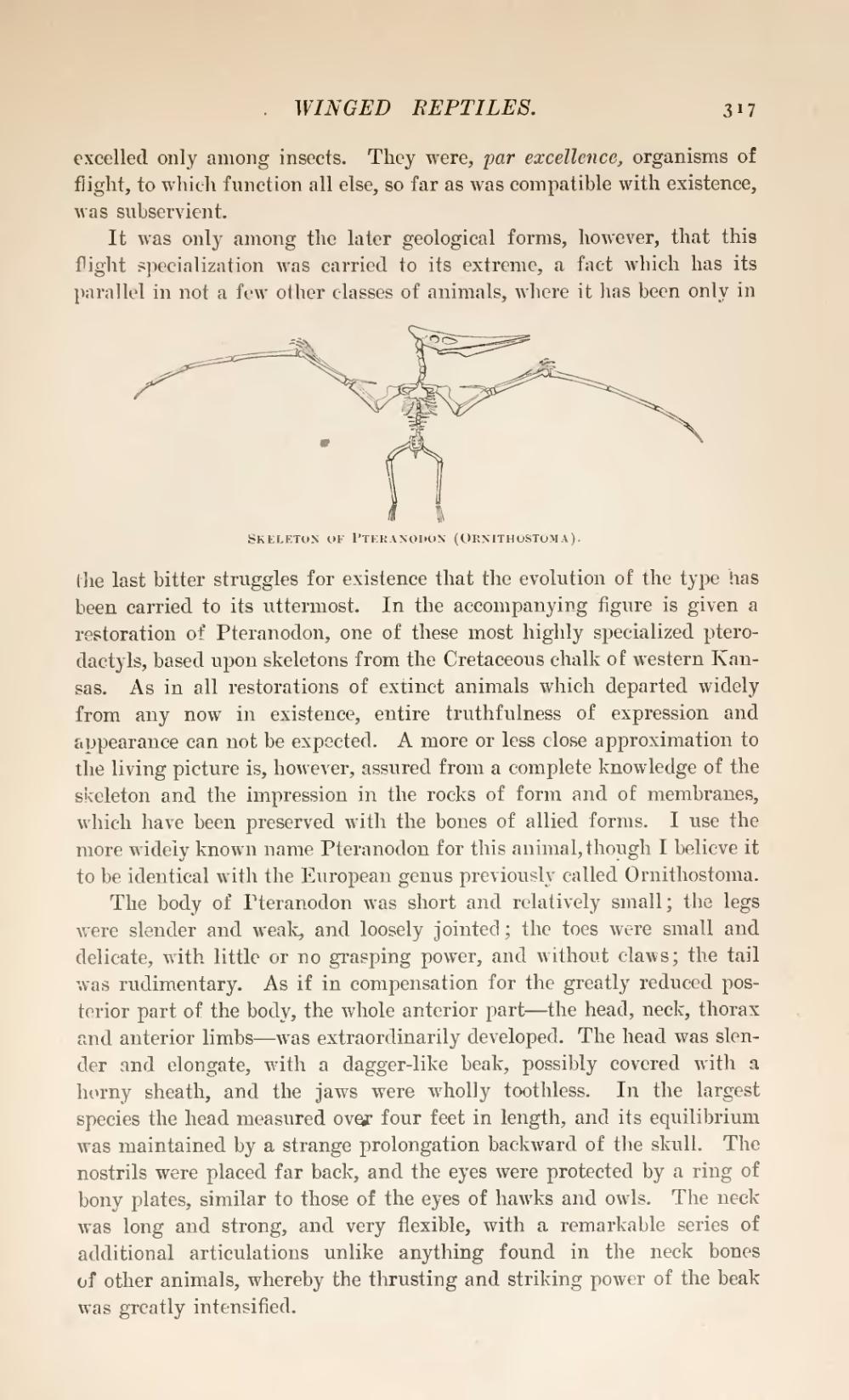excelled only among insects. They were, par excellence, organisms of flight, to which function all else, so far as was compatible with existence, was subservient.
It was only among the later geological forms, however, that this fight specialization was carried to its extreme, a fact which has its parallel in not a few other classes of animals, where it has been only in the last bitter struggles for existence that the evolution of the type has been carried to its uttermost. In the accompanying figure is given a restoration of Pteranodon, one of these most highly specialized pterodactyls, based upon skeletons from the Cretaceous chalk of western Kansas. As in all restorations of extinct animals which departed widely from any now in existence, entire truthfulness of expression and appearance can not be expected. A more or less close approximation to the living picture is, however, assured from a complete knowledge of the skeleton and the impression in the rocks of form and of membranes, which have been preserved with the bones of allied forms. I use the more widely known name Pteranodon for this animal, though I believe it to be identical with the European genus previously called Ornithostoma.
The body of Pteranodon was short and relatively small; the legs were slender and weak, and loosely jointed; the toes were small and delicate, with little or no grasping power, and without claws; the tail was rudimentary. As if in compensation for the greatly reduced posterior part of the body, the whole anterior part—the head, neck, thorax and anterior limbs—was extraordinarily developed. The head was slender and elongate, with a dagger-like beak, possibly covered with a horny sheath, and the jaws were wholly toothless. In the largest species the head measured over four feet in length, and its equilibrium was maintained by a strange prolongation backward of the skull. The nostrils were placed far back, and the eyes were protected by a ring of bony plates, similar to those of the eyes of hawks and owls. The neck was long and strong, and very flexible, with a remarkable series of additional articulations unlike anything found in the neck bones of other animals, whereby the thrusting and striking power of the beak was greatly intensified.


